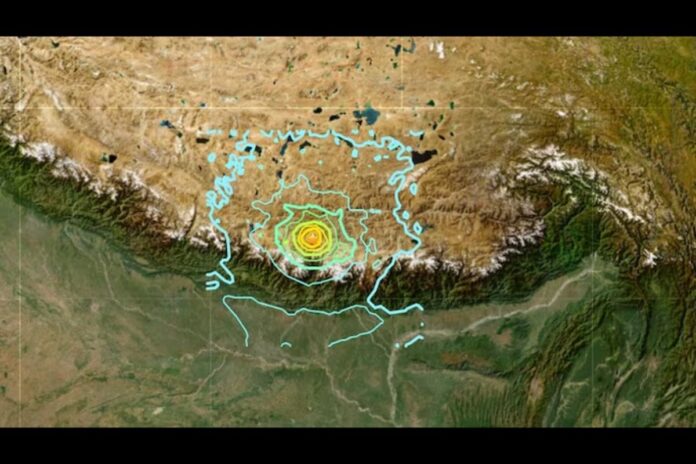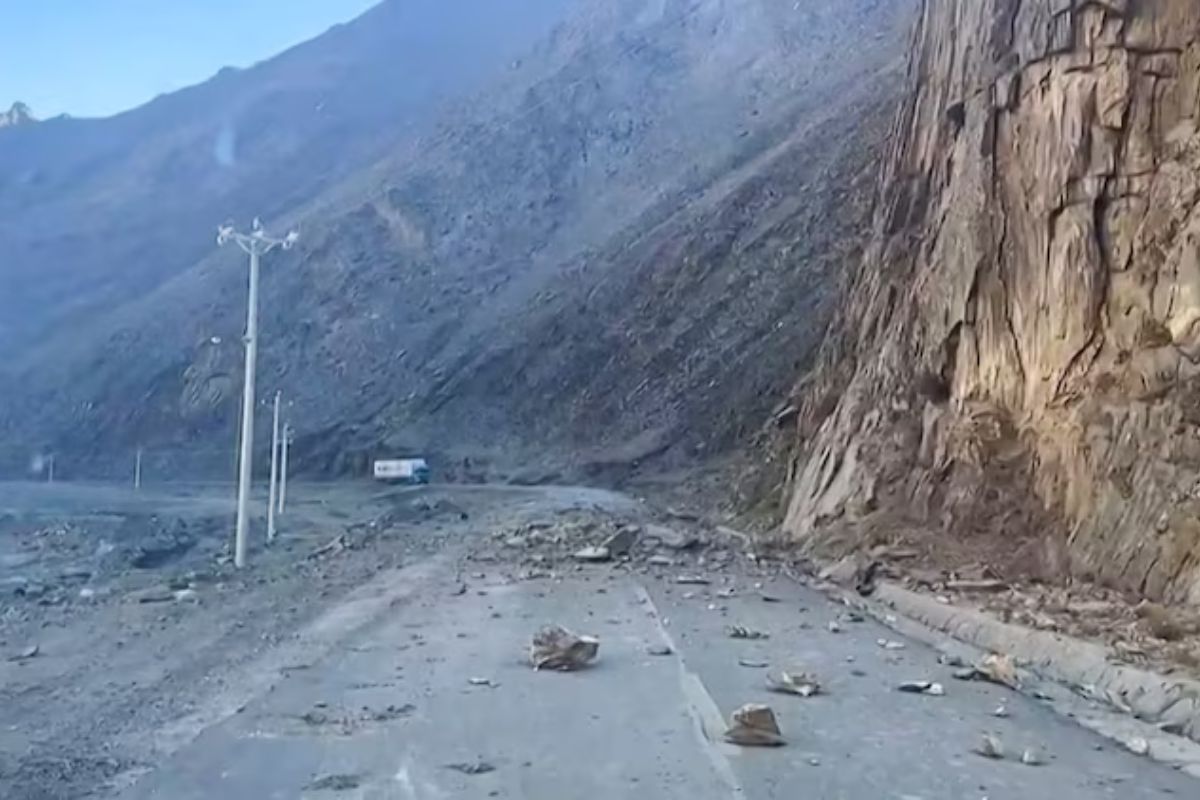
A powerful earthquake struck Tibet on January 7, 2025, near Mount Everest, causing widespread destruction and significant loss of life. The earthquake, measuring 6.8 on the Richter scale according to Chinese authorities and 7.1 as reported by the U.S. Geological Survey, occurred at 9:05 a.m. local time. The epicentre was located in Tingri County, approximately 80 kilometres north of Mount Everest. With a shallow depth of just 10 kilometres, the quake’s impact was amplified, leading to strong tremors felt in neighbouring regions, including Nepal, Bhutan, and parts of northern India.
The seismic event has resulted in at least 90 fatalities, and over 130 individuals have been injured, according to state media reports. The tremors led to the collapse of numerous buildings, particularly in Shigatse, Tibet’s second-largest city, and surrounding townships. Rescue operations are currently underway, with around 1,500 emergency workers deployed to search for survivors and provide relief to the affected areas.
The Geological Dynamics of the Lhasa Block
The Tibetan Plateau is one of the most seismically active regions globally, primarily due to the ongoing collision between the Indian and Eurasian tectonic plates. This tectonic interaction is responsible for the uplift of the Himalayas and the frequent seismic activity in the region. The recent earthquake in Tibet is attributed to the geological dynamics of the Lhasa block, a critical tectonic feature in southern Tibet.
The Lhasa block, also referred to as the Lhasa terrane, is a geological unit located between the Bangong-Nujiang suture zone to the north and the Indus–Yarlung Zangbo suture zone to the south. This block originated during the Cretaceous period, forming from fragments of East Africa and Australia before joining the Eurasian plate.
Positioned between the Qiangtang and Tethyan Himalayan terranes, the Lhasa block experiences significant tectonic forces. North-south compression due to the Indian-Eurasian plate collision results in crustal shortening and uplift, contributing to the formation of the Himalayas. Additionally, west-east stress leads to lateral crustal movements, further influencing fault systems in the region. These processes collectively make the Lhasa block a highly active seismic zone, prone to earthquakes like the recent Tingri tremor.
Impact of the Earthquake in Neighboring Regions
The quake’s impact extended far beyond Tibet, with strong tremors reported in Nepal, Bhutan, and parts of northern India. In Kathmandu, Nepal’s capital, residents described intense shaking that forced many to evacuate their homes in fear of structural collapses. Although no immediate casualties were reported from Nepal, authorities have initiated assessments to determine potential damage. Bhutan and several regions in northern India also experienced the quake, raising concerns over infrastructure resilience across the Himalayas.
In Tibet, the situation is dire, with extensive damage to buildings in and around Shigatse. Emergency response teams are racing against time to rescue survivors trapped under debris and provide medical aid to the injured. The destruction has displaced thousands, leaving them without shelter in freezing temperatures. Relief camps have been established to address immediate needs, including food, water, and medical care.

Historical Seismic Activity in Tibet
The Tibetan Plateau’s history is marked by frequent seismic events due to its complex tectonic structure. Over the past century, the region has witnessed numerous significant earthquakes, including the 1950 Assam-Tibet earthquake, which caused widespread devastation. The ongoing tectonic collision between the Indian and Eurasian plates continuously builds stress along fault lines, eventually leading to major seismic events.
The recent quake in Tingri County adds to this history of seismic activity. Experts believe that such events are reminders of the region’s vulnerability and the need for advanced monitoring and disaster preparedness. The Lhasa block’s role in seismic activity underscores the importance of studying geological structures to predict and mitigate future risks.
Relief Efforts and Global Response
Chinese President Xi Jinping has urged authorities to prioritize rescue and relief efforts, emphasizing the need to minimize casualties and ensure proper resettlement for affected communities. Approximately 1,500 emergency workers, including medical personnel and engineers, have been deployed to the affected areas. Relief operations focus on rescuing survivors, clearing debris, and providing essential supplies.
International organizations, including seismological agencies, are closely monitoring the region for aftershocks. The global community has extended its support, offering expertise and resources to aid Tibet in recovering from this disaster.
As the affected regions begin to rebuild, the Tibet earthquake serves as a stark reminder of the challenges posed by living in tectonically active zones. The event underscores the critical need for preparedness, resilience, and a deeper understanding of seismic risks to protect lives and infrastructure.

